
Semestinya kita—lepas dari rasa mega malu terhadap mutu film lokal berbau religi nan dangkal memuakkan macam “Ketika Cinta Bertasbih” serta fakta bahwa mantan pembunuh Hakim Agung (ya, Hakim Agung, bukan maling jemuran) bisa segampang itu mencalonkan diri jadi ketua partai besar & berpengaruh—haruslah bersyukur plus penuh bahagia hidup di negara tropis seperti Indonesia.
Jika di negara macam Amerika Serikat penduduknya hanya bisa menikmati musim panas cuman beberapa bulan saja—apalagi Skandinavia, sudah musim panasnya sangat pendek, yang namanya musim panas juga sebenernya masih bikin Melayu seperti kita menggigil kedinginan; sebaliknya di Nusantara matahari hampir tak pernah berhenti bersinar. Bahkan di musim hujan sekalipun. Nah, kalo panas-panas gitu enaknya ngapain? Dari sudut pandang pendosa, jawaban yang paling menggugah adalah: MINUM BIR DINGIN.
Berikut adalah panduan yang disusun oleh tim Men.Style.Com untuk memilih bir yang syahdu untuk dicleguk saat sang surya terik menyengat, lengkap dengan tingkat kompleksitas kandungannya, tingkat kenikmatan clegukan (chuggability), hingga, ahem, “snob value”-nya segala. Tentunya semua daftar nama-nama bir di sini adalah yang sesuai dikonsumsi bahkan ketika tengah hari bolong sekalipun—mengambil quote dari Men.Style.Com soal bir yang ideal untuk hot season:
…lighter, crisper, and typically lower in alcohol so you can drink ’em all afternoon and stay upright, the best summer beers are custom-tailored for warmer weather…
Sebenarnya ada 14 merk bir yang disodorkan. Tapi saya hanya beberkan lengkap cuma 6, yang dikualifikasikan terbaik oleh para editor Men.Style.Com saja. Tentu saja nilai yang diberikan tak bermakna mutlak. Masih relatif. Misalnya, katakanlah—dalam konteks bir—anda sama dengan saya yaitu mengedepankan “snob value”, menjujung tinggi aspek coolness sebagai fondasi ultra penting.
Well, jika demikian maka prioritas pilihan anda akan seperti ini:
Saison Dupont [snob value: 10]
Sixpoint Apollo Wheat [snob value: 9]
Lagunitas Sirius Ale [snob value: 8]
Ketiga produk di atas notabene tak masuk sama sekali di “editors pick” Men.Style.Com. Buat saya, ah, persetanlah rasanya kayak apa. Yang penting keren. Like, alasan penuh semangat mengkonsumsi Jägermeister bukan karena lezat (whew, rasanya kayak obat batuk!) tapi karena Lemmy Motörhead adalah penggila Jägermeister. Like, kalo Morrissey bilang bahwa minuman favoritnya Beras Kencur ya kita kudu membusungkan dada mengkultuskan Beras Kencur…
So-called “snob value”, eh?
Kemudian, semisal anda hendak bepergian ke luar negeri, semisal anda punya jadwal berpelesir dan/atau mudik ke Bali, mengingat pasokan bir-bir “ajaib” di negara ini amat minim, sudi kiranya anda bawain kita oleh-oleh segepok summer beer (Saison Dupont for me, please)…
And here’s the list:
- Widmer Brothers Hefeweizen
[Complexity: 5 / Chuggability: 7 / Snob Value: 7]
Founded in Portland in 1984, Widmer helped create American-style hefeweizen: Owing to their exceptionally rudimentary facilities, the brewers opted for a different yeast strain than the one traditionally used in Germany—with the result smacking more of citrus than banana. (A good thing once you’re on your second bottle, trust us.) The brothers Widmer also popularized the lemon wedge garnish now common among American hefeweizens—considered sacrilege overseas, but de rigueur on your front porch.
Location of brewery: Portland, OR
When opened: 1984
Type: American hefeweizen
Alcohol by volume: 4.9 percent
Key ingredients: Alchemy, Willamette, and Cascade hops; pale, Munich, wheat, and caramel malts
- Anchor Summer Beer
[Complexity: 6 / Chuggability: 8 / Snob Value: 7]
America’s original microbrewery has been around since 1896, but Anchor as we know it was created in 1965, when it was bought by Fritz Maytag, who pioneered the field of making traditional brews with modern methods and basically started the whole microbrew movement. (He’s also the great-grandson of the guy who started some washing-machine company.) This delicious and frothy beer—extremely light from its high wheat-to-malt concentration—was first brewed in 1984, raising questions as to whether Anchor or Widmer first Americanized wheat beer. We say tie goes to the drinker.
Location of brewery: San Francisco
When opened: 1896
Type: American wheat
Alcohol by volume: 4.6 percent
Key ingredients: wheat, two-row barley malt
- Harpoon Summer Ale
[Complexity: 7 / Chuggability: 8 / Snob Value: 5]
Founded by three Harvard grads—we’re sure their parents were thrilled—Harpoon introduced its Summer beer in 1999, after master brewer and CEO Rich Doyle returned from a trip to Germany infatuated with Kölsch beer. But Doyle modestly stops short of calling this a true Kölsch, instead saying it’s “brewed in the Kölsch style.” However it’s positioned, the resulting straw-gold elixir is light, crisp, and dry—and if you can actually taste that it’s not brewed within sight of the Cologne Cathedral, then you’re more discerning than most.
Location of brewery: Boston
When opened: 1986
Type: Kölsch-style ale
Alcohol by volume: 5 percent
Key ingredients: Vanguard hops
- Hitachino Nest White Ale
[Complexity: 8 / Chuggability: 5 / Snob Value: 8]
Kiuchi began producing beer in 1996, two years after Japan legalized microbreweries (but 170 years after the storied brewery put out its first batch of sake). Instead of mimicking German pilsners (as most of the new operations did), Kiuchi took on the Belgians with this two-time World Beer Cup winner infused with coriander, orange peel, and nutmeg. Bonus fact: The bloated, ghostly owl on the label appears to have eaten Spuds MacKenzie.
Location of brewery: Ibaraki, Japan
When opened: 1823
Type: Belgian-style white ale
Alcohol by volume: 5 percent
Key ingredients: Pilsner and wheat malts; Perle, Styrian Goldings hops, coriander, orange peel, nutmeg
- Reissdorf Kölsch
[Complexity: 6 / Chuggability: 9 / Snob Value: 7]
Like Champagne, a true Kölsch beer hails from a particular area—in and around Cologne, Germany (or Köln, as the locals call it). The brewing process is unique, too: It’s top-fermented like an ale, then matured cold like a lager, which dramatically mutes the fruitiness of this light, refreshing beer. A word to connoisseurs: Reissdorf should only be served in a stange, a tall, narrow 200-ml beaker that gives it more head—always a good thing—while minimizing exposure to oxygen, which can dull a beer’s taste.
Location of brewery: Cologne, Germany
When opened: 1894
Type: Kölsch
Alcohol by volume: 4.8 percent
Key ingredients: Hallertauer hops, pilsner and Munich malts
- Sierra Nevada Summerfest
[Complexity: 7 / Chuggability: 8 / Snob Value: 6]
“During the summer, it’s nice to have a beer at 11:30 in the morning, and not be like, oh, wow, what do I do with the rest of my day?” So says master brewer Steve Dressler, who’s other concoctions for Sierra tend to be a bit higher in alcohol content. We’re inclined to agree (though we suspect there’s more opportunity for the 11:30 beer in his line of work than ours). Dressler’s summer fest blends German and Czech hops with a bit of pilsner malt for a balance of sweet and bitter that leaves the palate clean. And while this summer’s version comes in a newer, bluer bottle design, we’re happy to report that what’s inside hasn’t changed a bit.
Location of brewery: Chico, CA
When opened: 1980
Type: Pilsner
Alcohol by volume: 5 percent
Key ingredients: Perle and Saaz hops; two-row Pale and Munich hops; bottom-fermenting lager yeast
- Saison Dupont
[Complexity: 7 / Chuggability: 2 / Snob Value: 10]
Location of brewery: Halnaut, Wallonia, Belgium
When opened: 1950
Type: Saison Dupont
Alcohol by volume: 6.5 percent
Key ingredients: Pilsner malt, Kent Goldings and Styrian Goldings hops
- Sixpoint Apollo Wheat
[Complexity: 5 / Chuggability: 7 / Snob Value: 9]
Location of brewery: Brooklyn
When opened: 2004
Type: Unfiltered American wheat ale
Alcohol by volume: 5.2 percent
Key ingredients: Canadian wheat, Maris Otter, and pilsner malts
- Summit Scandia
[Complexity: 3 / Chuggability: 7 / Snob Value: 6]
Location of brewery: St. Paul, MN
When opened: 1986
Type: Belgian ale
Alcohol by volume: 4.8 percent
Key ingredients: Harrington, oats, wheat, and acidulated malts; Saaz hops
- Redhook Sunrye
[Complexity: 7 / Chuggability: 8 / Snob Value: 4]
Location of brewery: Woodinville, Portsmouth, WA
When opened: 1981
Type: Rye ale
Alcohol by volume: 4.7 percent
Key ingredients: Two-row barley, various other “specialty” malts; Mount Hood, Hersbrucker hops
- Pyramid Curve Ball
[Complexity: 7 / Chuggability: 8 / Snob Value: 6]
Location of brewery: Seattle
When opened: 1984
Type: Kölsch or blonde ale
Alcohol by volume: 4.9 percent
Key ingredients: Two-row barley, malted wheat malts; Vanguard, Perle hops
- Magic Hat Circus Boy
[Complexity: 8 / Chuggability: 5 / Snob Value: 6]
Location of brewery: Burlington, VT
When opened: 1994
Type: Hefeweizen
Alcohol by volume: 5.2 percent
Key ingredients: Malted wheat, pale, Cara malts; Amarillo, Styrian Goldings hops
- Lagunitas Sirius Ale
[Complexity: 7 / Chuggability: 2 / Snob Value: 8]
Location of brewery: Petaluma, CA
When opened: 1993
Type: Imperial cream ale
Key ingredients: n/a
- Hoegaarden
[Complexity: 6 / Chuggability: 8 / Snob Value: 3]
Location of brewery: Hoegaarden, Belgium
When opened: 1965
Type: Belgian wheat
Alcohol by volume: 4.9 percent
Key ingredients: Unmalted wheat, curaçao orange peels, coriander
Tulisan ini juga diterbitkan di blog www.rudolfdethu.com
Copyright Beergembira.com. All rights reserved. 2024.







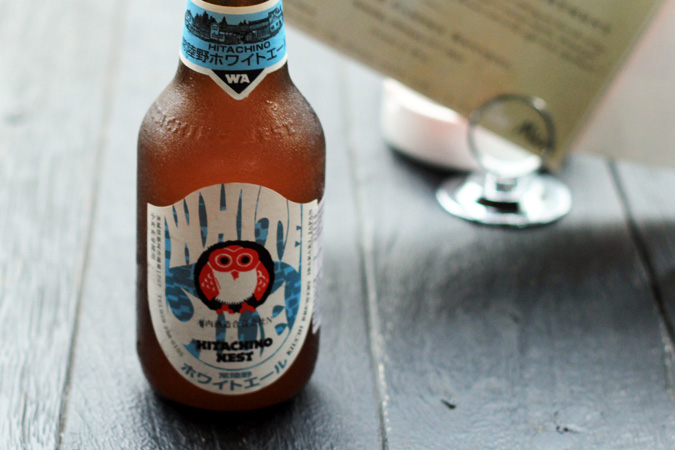








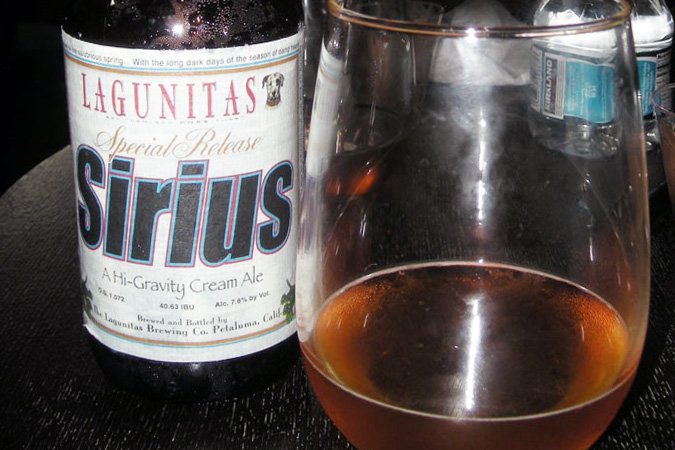


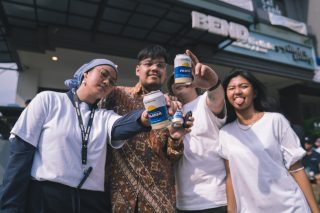
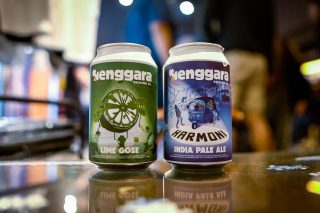

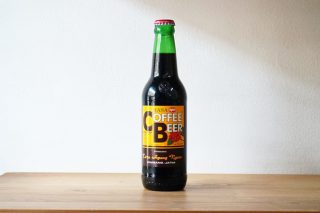




 @BEERGEMBIRA
@BEERGEMBIRA @BEERGEMBIRA
@BEERGEMBIRA BEERGEMBIRA
BEERGEMBIRA BEERGEMBIRA
BEERGEMBIRA